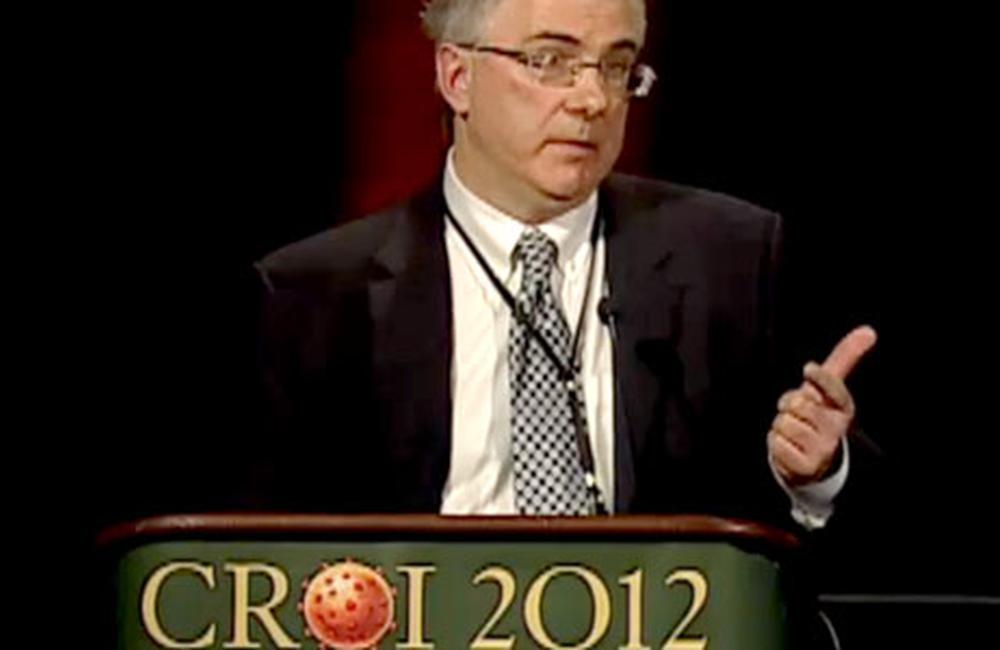
GS-7340, a pro-drug of tenofovir that reaches higher concentrations in cells, had superior efficacy and may be more suitable for inclusion in co-formulations, researchers reported on 7 March at the 19th Conference on Retroviruses and Opportunistic Infections in Seattle.
Gilead Sciences' tenofovir is among the most potent nucleoside/nucleotide reverse transcriptase inhibitors. Tenofovir disoproxil fumarate (TDF), marketed as Viread and also contained in the Truvada, Atripla and Eviplera combination pills, is a preferred agent in European and US antiretroviral treatment guidelines. GS-7340, a pro-drug of tenofovir that is converted into the active form in the body, was designed to better target lymphoid tissues and cells.
A prior 14-day monotherapy study (GS-US-120-1101) presented at last year's Retrovirus conference showed that GS-7340 at doses of 50 and 150mg demonstrated favourable pharmacokinetics and good antiviral activity. The 50mg dose produced an 88% lower plasma tenofovir concentration, but fourfold higher intracellular tenofovir diphosphate concentration compared with 300mg TDF.
Based on these findings, Peter Ruane and colleagues conducted a randomised, controlled dose-finding trial (GS-US-120-0104) comparing three doses of the GS-7340: 8, 25 and 40mg taken once daily for ten days. Control patients received either open-label TDF (active control) or placebo (inactive control).
The analysis included 38 HIV-positive participants with viral load of at least 2000 copies/ml. They could be either antiretroviral-naive or experienced, but had no genotypic drug resistance at baseline. Almost all (97%) were men, about half were white and the average age was 38 years. The mean CD4 cell count was 444 cells/mm3.
At day 11, all doses of GS-7340 produced time-weighted average decreases in HIV RNA (0.76, 0.94 and 1.08 log10 copies, respectively, in the three dose arms) greater than the reduction seen with TDF (0.48 log10) or placebo (0.01 log10).
Median drops in viral load were likewise larger with GS-7340 (1.08, 1.46 and 1.73 log10, respectively) than with TDF (0.97 log10) or placebo (0.07 log10). In both comparisons, differences from TDF and placebo were statistically significant for the two higher GS-7340 doses.
Plasma tenofovir levels (AUC and Cmax) were 79% to 98% lower with GS-7340 than with TDF. As in the pilot study, intracellular tenofovir diphosphate levels were higher with GS-7340 than with TDF – about seven times higher with the 25mg dose and more than 20 times higher with the 40mg dose.
GS-7340 was generally well-tolerated, with no premature drug discontinuations, drug-related serious adverse events or clinically significant laboratory abnormalities. No tenofovir resistance mutations were detected.
The researchers said that GS-7340 at doses of 25 and 40mg demonstrated "superior antiviral efficacy" compared with 300mg TDF, "achieving higher intracellular [tenofovir diphosphate] concentration with lower systemic [tenofovir] exposure".
"GS-7340 has the potential to be more efficacious with an improved safety margin, and to be easier to co-formulate, compared with TDF," they concluded, noting that an adequate dose of GS-7340 has one-tenth the mass of 300mg TDF.
No signals of kidney toxicity were reported in this study, a concern with TDF. Ruane said there has been no evidence of bone toxicity in dogs, but human studies are ongoing.
Based on these findings, Gilead has elected to proceed with the 25mg dose, which the researchers said provided "near maximal" antiviral activity. Ruane said this dose was chosen over the more potent 40mg dose because the smaller amount would be easier to put in single-tablet regimens.
To date, Gilead has announced two such products: a new version of the Quad pill containing GS-7340, the experimental integrase inhibitor elvitegravir, the novel boosting agent cobicistat and emtricitabine, as well as a protease inhibitor-based tablet containing GS-7340 plus darunavir (Prezista), cobicistat and emtricitabine. Studies of both new single-tablet regimens are underway.
Ruane P et al. GS-7340 25 mg and 40 mg demonstrate superior efficacy to tenofovir 300 mg in a 10-day monotherapy study of HIV-1+ patients. Nineteenth Conference on Retroviruses and Opportunistic Infections, Seattle, abstract 103, 2012. The abstract is available on the official conference website.
